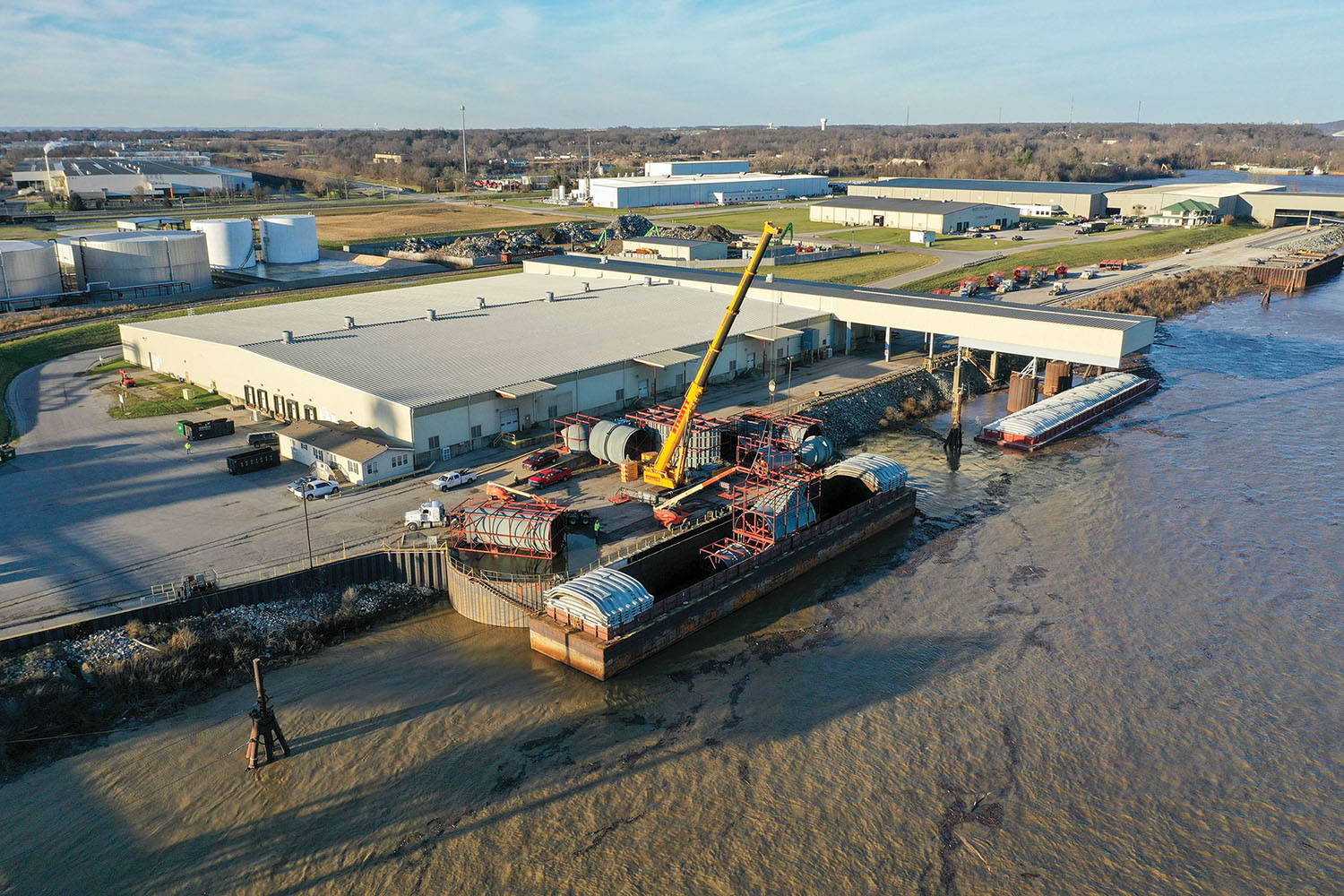The Ports of Indiana-Jeffersonville announced the formation of Indiana Cargo Crossroads, a partnership with new general cargo terminal operator Superior River Terminals Indiana (SRTI), on February 7.
SRTI began work in Jeffersonville January 1, providing stevedoring and distribution services to customers. Indiana Cargo Crossroads is focused on growing and diversify cargoes, making investments into facility expansions and driving projects that create significant economic benefits for the regional economy.
The port’s general cargo terminal consists of a 10-acre parcel of land adjacent to the Ohio River, two barge docks, a 131,000-square-foot warehouse, four acres of dock space, outdoor storage areas and a 500-foot covered craneway with a 35-ton overhead crane for all weather transloading of commodities between barge, rail, truck and warehouse. The facility has operated near-capacity handling steel products for several years.
“This is a fantastic new partnership in Jeffersonville,” said Vanta E. Coda II, Ports of Indiana chief executive officer. “We anticipate growth from current and new customers benefiting from our competitive advantages and cost-savings at the port.”
SRTI brings more than 30 years of stevedoring, transloading and warehousing services to Jeffersonville through its parent company, Lake Superior Warehousing Co. Inc.
“We are very excited to be the new general cargo operator in Jeffersonville,” said Jonathan Lamb, president of SRTI. “It’s a great facility in a dynamic market. We’re looking forward to a long-term partnership with the Ports of Indiana, providing value to businesses in the region and growing the capabilities of and volume through the terminal.”




